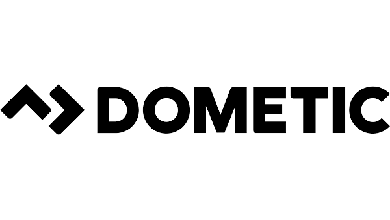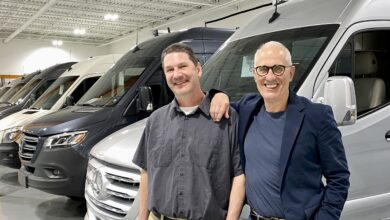Get Ready for the Next Market Shift
Prepare your dealership by focusing on these three action steps now.

The market has shifted again.
Rising interest rates, increased inventory, less maintenance work and more warranty work, longer delays in getting claims processed and paid – just to name a few of the current conditions affecting the industry’s profitability.
What about sales? Slow is what I’m hearing.
So, my question to you is: Wouldn’t it be better to start preparing your store now against the next set of market conditions before it’s too late? Or would you rather wait until the next wave of change crashes on the market? Let’s talk about profitability in service.
Here are three actionable items for you to get profitable now:
- Update your communication model. Every customer that comes into your store has a smartphone. Every single customer. My Dad has a smartphone, and he is 84.
Obviously, customers can call, email, text, record a video and send it, use an app to take a picture and send a visual message, use the voice feature and record a message and send it – there are so many ways they can communicate. May I ask what are you doing at your store to keep up with it?
If you think of your dealership as a living, breathing business, then you know that effective communication and messaging is the key to sustaining life. Effective communication and messaging are instrumental to a thriving business.
Do you have a viable and active website? Are you on Facebook? LinkedIn? When was the last time you looked at any of these accounts? Are they up to date? Can a customer find you and communicate with you using one of these communication streams?
Do you regularly post educational or “how to” videos, sales specials, service specials, weather conditions, etc., on your website and explain how each of those affects your customer?
Are you following up with your service customers using text? I don’t know how a busy service department stays in touch these days using just a landline. Everybody checks their texts all the time. Their phone dings, buzzes and chimes all day long, and people respond to the notifications like a toddler to an ice cream cone – hands outstretched and saying “gimme, gimme, gimme.”
I recently had this conversation with my son-in-law who happens to own a 24-foot travel trailer. It went something like this:
“I dropped my trailer off for repairs, and I didn’t hear from the advisor for three weeks. I called him several times, emailed him three times, and finally gave up. He didn’t call me back until it was time to discuss the stuff I had to pay for.”
Not much of a conversation, is it? I had no answers other than, “That’s why we train.”
I once took over a dealership where an advisor was struggling because of poor communication with his customers. Nice guy but struggling. He was generating so much heat, I could cook hotdogs at his desk.
I signed all the advisors up for a text service from their desktop. (Google has this and anyone can sign up to use it, or you can use WhatsApp, or find something else.) Overnight, it turned him into a superman with super sales.
He became the top-selling advisor for three months in a row, and he stopped getting heat, stopped me from getting his heat, and customers liked him – total game-changer. He became an effective communicator, staying in touch the way his customers wanted him to stay in touch.
When evaluating your communications, you need to look at everyone. How are the advisors communicating with the techs? Parts? Customers? Are you still wandering through the lot yelling his/her name in row after row of rigs for sale? Or paging over the intercom (if you have one) “Bob, you have a call holding on line 1, Bob…line 1?” If so, how do you think that sounds to the customer who is 20/30/40 something and uses their smartphone for everything?
Maybe you just tell the customer you’ll take a message (voicemail – what’s that?) and just give up. I can tell you this, my 30-something son-in-law doesn’t understand why his RV dealer can’t communicate effectively, and it’s the reason he is not taking his travel trailer back there.
Think about time, convenience and value, and grade your store on a scale of 1-10 with 10 being the best, on how well you communicate with your customers.
Are you timely with updates? Are you communicating the way the customer likes to be communicated with? Is it convenient for the customer to stay in contact with you?
- Advertise effectively. Have you watched “open source” television lately? Me neither. Most of my views are on a streaming service like AmazonPrime or Netflix. Rarely do I flip to the local channel and see what’s on.
Your customers are doing the same thing. Most surveys say the average person is watching between two to three hours of video a day, using platforms they want to use and not regular cable television. And they are turning from traditional radio to app driven “listen to what I want to” platforms.
It doesn’t mean that TV and radio are dead – it’s just that they are gasping for oxygen in the form of advertising dollars while being squeezed to death between the many entertainment choices we have today.
If you are not moving forward on social video platforms, getting on the app-driven music platforms and advertising where the customer is, you are going to have a tough time in the future. You will find an ever-shrinking audience for your message.
Set a budget of dollars per repair order for your fixed operations and start a campaign that takes advantage of social platforms that people are paying attention to. Send videos explaining everything from the hours you are open to how to check the breaker panel for the stove. Everything can be videoed and sent to the customer and put on your website.
Use every means of communication that is effective, not just the “tried and true.”
Advertise to educate first and entice second. People watch two to three hours a day because they want to be entertained and they want to learn something while they are being entertained.
- Train your personnel to capture and keep this – and future generations – of customers. Transparency, convenience, time, competency, value proposition – these are all words that describe what our customers want, and what they say will lead to them making a repurchase decision or coming back for service.
The problem is, we have been behind the times in the RV dealership.
Often dealers are faced with outdated processes (or no processes), slow to respond communications (or not responding at all), and poor to nonexistent communication skills.
What if we used a service sales process that includes a walkaround and brief inspection, an honest discussion of maintenance required, a multipoint inspection (so we can spot items that require attention), triage within a reasonable time frame (the key being reasonable), constant contact and updates (even if it is to say “I don’t have any news for you at this time), an explanation of the repairs completed and, lastly, a review of items requiring attention at a future date.
What if?
(I just gave you the basic service sales process for increased sales, customer satisfaction and retention.)
The average customer pulling a trailer into your dealership is seeking something else. They don’t want an “industrialized” or “institutionalized” service experience. They want a personal experience that makes them feel valued and appreciated.
Think attraction. Think value. Think about personal contact and relationships. I don’t want a relationship with the guy who loads my tray at McDonalds. I do want a relationship with the advisor who is responsible for the repairs to my rig.
Value-driven answers the question: “Why would I choose your dealership over any other service provider out there?” Focus on the benefit the customer gets by doing business with you. Because, quite frankly, they can get a lot of the same stuff someplace else.
Which means you must stress personal service and relationships. We do this by reeducating our service personnel to build value by being human, personable, helpful, caring and empathetic while using a service sales process that walks the advisor and the customer down the aisle together.
Prepare your dealership with effective communications, advertising in a way that makes sense to the buying public, and retrain your personnel to build value by stressing what makes the experience personal and value-driven.



